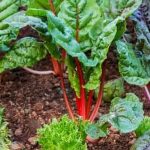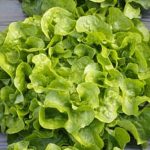The Vegetable Gardener’s Bible has long been hailed as the go-to resource for all vegetable gardeners. Whether you’re a seasoned pro or just starting out, this comprehensive guide is essential for anyone looking to grow their own fresh, organic produce.
In this article, we will explore the history and importance of The Vegetable Gardener’s Bible, as well as delve into the principles and methods discussed in its pages. We’ll also provide a step-by-step guide to starting your very own vegetable garden using the valuable knowledge found within this book.
Now in its third edition, The Vegetable Gardener’s Bible has proven to be a trusted companion for countless gardeners around the world. With over 560 pages of information and advice, it covers everything from selecting the right vegetables for your climate to maintaining healthy soil and addressing common gardening challenges.
But what sets The Vegetable Gardener’s Bible apart from other gardening books? Its unique approach combines both science-based knowledge and practical experience. Author Edward C. Smith draws on his decades of gardening expertise to provide readers with tried-and-true techniques that yield impressive results.
In the following sections, we will uncover the fascinating history behind The Vegetable Gardener’s Bible and explore why it has become an indispensable tool for avid gardeners. We will also dive into the principles and methods laid out within this valuable resource, giving you an understanding of how to best utilize its wealth of information.
So join us on this journey as we uncover all that The Vegetable Gardener’s Bible has to offer and discover why it truly is an essential reference for every vegetable gardener.
The History and Importance of The Vegetable Gardener’s Bible
The Vegetable Gardener’s Bible is a comprehensive guide that has become an essential reference for every vegetable gardener. In this section, we will explore the history and importance of this renowned book.
The history of The Vegetable Gardener’s Bible dates back to its first publication in 2000 by Edward C. Smith, an experienced gardener with a passion for growing vegetables. Smith’s expertise and practical approach to gardening quickly gained recognition among avid gardeners, leading to the widespread popularity of his book.
One of the key reasons why The Vegetable Gardener’s Bible holds such importance in the field is its ability to cater to both beginner and experienced gardeners. The book covers a wide range of topics, from understanding soil composition to diagnosing plant diseases, making it a valuable resource for anyone looking to start or enhance their vegetable garden.
Moreover, The Vegetable Gardener’s Bible incorporates scientific principles and methods while maintaining a user-friendly approach. It provides readers with practical step-by-step instructions on various gardening tasks, enabling them to plan and execute their vegetable gardens effectively. This combination of theory and practicality has set The Vegetable Gardener’s Bible apart as a reliable guide for achieving successful yields.
The significance of this book also lies in its emphasis on organic and sustainable gardening practices. With increasing awareness about the harmful effects of chemical pesticides and fertilizers on human health and the environment, many gardeners are turning towards natural alternatives. The Vegetable Gardener’s Bible not only discusses these alternatives but also explains their benefits in detail, making it an invaluable resource for those looking to adopt eco-friendly gardening practices.
Understanding the Principles and Methods discussed in The Vegetable Gardener’s Bible
The Vegetable Gardener’s Bible is not just a book filled with gardening tips and techniques, but it also provides readers with a comprehensive understanding of the principles and methods that are discussed within its pages. This section of the book is crucial for any vegetable gardener who wants to take their skills to the next level.
One of the key principles emphasized in The Vegetable Gardener’s Bible is the importance of organic gardening. The author stresses the benefits of using organic methods, such as avoiding synthetic pesticides and chemical fertilizers, to protect both the environment and our health. By following these principles, gardeners can create a sustainable garden ecosystem that supports beneficial insects and promotes soil health.
Another important aspect covered in this section is companion planting. This method involves planting different crops together to maximize growth and minimize pests. For example, planting marigolds alongside tomatoes can help repel harmful insects while attracting pollinators. Understanding these concepts allows gardeners to implement strategies that promote healthy plant growth and increase overall productivity.
The Vegetable Gardener’s Bible also delves into the significance of crop rotation. This practice involves systematically changing the location of vegetables each year to prevent soil-borne diseases and nutrient depletion. By rotating crops according to specific guidelines, gardeners can maintain soil fertility for long-term success.
Step-by-Step Guide to Starting Your Vegetable Garden with The Vegetable Gardener’s Bible
Starting a vegetable garden can be an exciting and rewarding endeavor. The Vegetable Gardener’s Bible is an invaluable resource that provides a step-by-step guide to help you start your own vegetable garden successfully. This section will walk you through the key steps outlined in the book, ensuring that you have all the information you need to get started.
The first step in starting your vegetable garden is choosing the right location. The Vegetable Gardener’s Bible emphasizes the importance of selecting a spot with at least six hours of sunlight per day. It also recommends considering factors such as soil quality, drainage, and proximity to a water source. Taking these factors into account will help ensure optimal growing conditions for your vegetables.
Once you have chosen a location, the next step is preparing the soil. The book advises removing any existing weeds or grass and loosening the soil using a garden fork or tiller. Adding compost or organic matter is also recommended to improve soil fertility and structure. This section of The Vegetable Gardener’s Bible provides detailed instructions on soil preparation techniques that will create an ideal environment for your vegetables to thrive.
After preparing the soil, it is time to plan and plant your vegetables. The book suggests starting with easy-to-grow crops like tomatoes, lettuce, and peppers for beginners. The Vegetable Gardener’s Bible provides guidance on seed selection, planting depth, spacing, and proper care for each vegetable variety. Following these detailed instructions will give your plants the best chance of healthy growth and abundant yields.
| Steps | Description |
|---|---|
| 1 | Choose the right location with at least six hours of sunlight per day and consider soil quality, drainage, and proximity to a water source. |
| 2 | Prepare the soil by removing weeds or grass, loosening the soil, and adding compost or organic matter to improve fertility and structure. |
| 3 | Select easy-to-grow crops for beginners like tomatoes, lettuce, and peppers. Follow instructions on seed selection, planting depth, spacing, and care for each vegetable variety. |
Essential Tools and Resources Recommended in The Vegetable Gardener’s Bible
Basic Tools for Vegetable Gardening
In The Vegetable Gardener’s Bible, author Edward C. Smith provides a comprehensive list of essential tools that every vegetable gardener should have. These tools are necessary for various tasks such as soil preparation, planting, weeding, and harvesting. Some of the basic tools recommended in the book include:
- Spade or shovel: Used for digging and turning soil.
- Garden fork: Useful for loosening compacted soil and removing weeds.
- Hand trowel: Ideal for planting seedlings and transplanting small plants.
- Garden rake: Used to level and smooth out soil surfaces.
- Hoe: Helps in breaking up clumps of soil and removing weeds.
These basic tools are just the beginning. The Vegetable Gardener’s Bible also suggests other valuable tools that may not be as commonly used but can greatly enhance the gardening experience.
Recommended Resources
Aside from tools, The Vegetable Gardener’s Bible also highlights several resources that can further assist vegetable gardeners in achieving successful results. These resources provide additional information, tips, and inspiration to enhance one’s gardening knowledge and skills. Some recommended resources include:
- Seed catalogs: Authoritative sources that offer a wide variety of vegetable seeds suitable for different regions and climates.
- Soil testing kits: Help determine the pH levels and nutrient deficiencies in the soil, enabling gardeners to make informed decisions about fertilizer application.
- Gardening magazines and websites: Provide articles, tutorials, and forums where gardeners can ask questions, share experiences, and learn from experts.
- Local gardening clubs or communities: Offer opportunities to connect with fellow gardeners who can provide guidance specific to the local area.
By utilizing these recommended resources along with The Vegetable Gardener’s Bible, gardeners can gain a wealth of knowledge and access to a supportive community that will help them succeed in their vegetable growing endeavors.
Sustainable and Eco-Friendly Tools and Resources
In addition to the basic tools and resources, The Vegetable Gardener’s Bible emphasizes the importance of using sustainable and eco-friendly options whenever possible. This includes:
- Composting systems: Encourages gardeners to recycle organic waste from the kitchen and garden to create nutrient-rich compost that feeds the soil.
- Rain barrels: Collected rainwater can be used to water plants, reducing reliance on municipal water sources.
- Mulch materials: Using organic mulches such as straw, wood chips, or grass clippings helps retain soil moisture, suppress weeds, and improve soil health.
By incorporating these sustainable practices into their vegetable gardens, gardeners can minimize their environmental impact while maximizing the health and productivity of their plants.
Common Vegetable Gardening Challenges Addressed in The Vegetable Gardener’s Bible
The Vegetable Gardener’s Bible is not just a guide for starting and maintaining a vegetable garden, but it also addresses common challenges that many gardeners face. This section will explore some of the most common vegetable gardening challenges discussed in the book and how The Vegetable Gardener’s Bible offers solutions to address them.
Pest Control
One of the most frustrating challenges for any vegetable gardener is dealing with pests. Whether it’s insects, animals, or diseases, these can significantly damage or even destroy your crops. The Vegetable Gardener’s Bible provides valuable information on identifying different pests and diseases that commonly affect vegetable gardens.
It also offers organic pest control methods to manage infestations without resorting to harmful chemicals. From companion planting techniques to natural insect repellents, this book provides a range of solutions to keep your vegetable garden healthy and thriving.
Managing Weeds
Weeds are another common challenge that gardeners face when maintaining their vegetable gardens. Not only do weeds compete for nutrients and sunlight with your crops, but they also provide hiding places for insects and diseases. In The Vegetable Gardener’s Bible, you’ll find helpful strategies for weed management and prevention.
The book explores different mulching methods to suppress weed growth while conserving soil moisture. Additionally, it discusses proper spacing techniques and intercropping practices that can help shade out weeds naturally.
Climate Challenges
Different climates present unique challenges for vegetable gardening. Some regions experience long winters or scorching summers, while others have short growing seasons or unpredictable weather patterns. The Vegetable Gardener’s Bible recognizes these climate challenges and offers suggestions on how to overcome them.
It provides guidance on selecting appropriate vegetable varieties for specific climates and seasons. Moreover, the book outlines techniques such as using row covers, greenhouses, or sheltered microclimates to extend the growing season and protect plants from extreme weather conditions.
The Vegetable Gardener’s Bible is a comprehensive resource that not only teaches the principles and methods of vegetable gardening but also offers practical solutions to address common challenges. From pest control strategies to weed management techniques and climate adaptability advice, this book equips every avid gardener with the knowledge and tools necessary for successful vegetable gardening. By addressing these challenges head-on, gardeners can cultivate thriving vegetable gardens year after year.
Soil Preparation and Maintenance Tips from The Vegetable Gardener’s Bible
One of the most important aspects of successful vegetable gardening is proper soil preparation and maintenance. The Vegetable Gardener’s Bible offers valuable tips and techniques to ensure that your soil is in optimal condition for growing healthy and productive plants.
Soil Preparation
The first step in preparing your soil is understanding its composition. The Vegetable Gardener’s Bible provides guidelines for determining the pH level, texture, and fertility of your soil. Armed with this knowledge, you’ll be able to make informed decisions about any amendments or adjustments that need to be made.
The book emphasizes the importance of adding organic matter to your soil. Compost, aged manure, and cover crops are all recommended to improve soil structure, moisture retention, and nutrient content. The Vegetable Gardener’s Bible also discusses the concept of double-digging, a technique that helps loosen compacted soil and create a deep root zone for your plants.
Soil Maintenance
Once your soil is prepared, ongoing maintenance is key to ensuring healthy plant growth throughout the season. The Vegetable Gardener’s Bible encourages gardeners to practice regular soil testing to monitor nutrient levels and pH balance. This will help you adjust fertilizer applications or potentially additional amendments as needed.
Another important aspect of maintaining healthy soil is weed control. Weeds compete with your vegetable plants for nutrients, water, and sunlight. The book provides strategies for both preventing weeds from taking hold in your garden through proper spacing and mulching techniques, as well as effective methods for removing existing weeds without disturbing the roots of your vegetables.
In addition, The Vegetable Gardener’s Bible touches on irrigation practices such as watering deeply but infrequently to promote deep root growth and prevent overwatering. It also offers guidance on crop rotation as a means of reducing disease pressure in the soil.
By following the soil preparation and maintenance tips outlined in The Vegetable Gardener’s Bible, you can create and maintain a healthy and productive soil environment for your vegetable garden. Taking the time to understand and care for your soil will pay off with bountiful harvests of delicious home-grown produce.
Maximizing Yield and Harvesting Techniques with The Vegetable Gardener’s Bible
One of the key goals for any vegetable gardener is to maximize their yield. After putting in all the hard work of planting and tending to your garden, it’s important to ensure that you are able to harvest as much produce as possible. Thankfully, The Vegetable Gardener’s Bible provides valuable insights and techniques on how to achieve just that.
The book emphasizes the importance of proper spacing between plants. This allows each vegetable to have enough room to grow and develop without being overcrowded. Overcrowding can lead to competition for sunlight, water, and nutrients, resulting in stunted growth and lower yields. The Vegetable Gardener’s Bible provides specific recommendations on spacing for different vegetables, so you can make the most efficient use of your garden space.
Another important aspect covered in The Vegetable Gardener’s Bible is proper timing for harvesting. Each vegetable has its own optimal time for harvest, when it is at its peak flavor and nutritional value. Harvesting either too early or too late can result in subpar quality or even loss of produce.
The book provides guidelines on how to determine when a particular vegetable is ready for harvest based on visual cues such as color, size, and texture. It also discusses techniques such as “harvesting baby greens” where you can continuously harvest leaves from certain leafy vegetables without damaging the entire plant.
Additionally, The Vegetable Gardener’s Bible offers tips on extending the harvest season. By staggering your planting dates or choosing varieties with different maturity times, you can enjoy a longer harvest period. This ensures a continuous supply of fresh vegetables throughout the growing season rather than having an overwhelming abundance all at once. The book also guides readers on proper storage techniques for harvested produce, helping them preserve the fruits of their labor for even longer.
Overall, by following the techniques and strategies outlined in The Vegetable Gardener’s Bible, avid gardeners can maximize their yield and enjoy a bountiful harvest. Whether you are a beginner or an experienced gardener, this book serves as an essential reference to help you make the most of your vegetable garden.
Pest Control and Disease Prevention Strategies from The Vegetable Gardener’s Bible
One of the key aspects of successful vegetable gardening is effectively managing pests and preventing diseases. In The Vegetable Gardener’s Bible, the author provides valuable strategies to help gardeners overcome these challenges and achieve a bountiful harvest. This section will outline some of the key pest control and disease prevention strategies discussed in The Vegetable Gardener’s Bible.
Firstly, the book emphasizes the importance of proactive measures to prevent pests and diseases. This includes practices such as crop rotation, which helps disrupt the life cycle of pests and reduce the risk of disease buildup in the soil. The Vegetable Gardener’s Bible provides detailed guidelines on how to plan your garden layout for effective crop rotation.
Another strategy highlighted in the book is companion planting. By strategically placing certain plants together, you can repel pests or attract beneficial insects that prey on pests. The author goes into detail about specific plant combinations that work well for pest control in different regions and climates.
Additionally, The Vegetable Gardener’s Bible stresses the significance of proper sanitation practices to prevent diseases. This includes removing diseased plant materials promptly, practicing good weed control, and maintaining clean tools. The book provides step-by-step instructions on how to clean tools thoroughly to minimize disease transmission.
The Vegetable Gardener’s Bible
In conclusion, The Vegetable Gardener’s Bible is truly an essential reference for every avid gardener. Throughout this article, we have explored the history and importance of this book, as well as delved into the principles and methods it discusses. We have also provided a step-by-step guide to starting your vegetable garden with the help of this valuable resource.
Not only does The Vegetable Gardener’s Bible offer guidance on how to start your garden, but it also provides recommendations for essential tools and resources that will assist you in your gardening journey. Additionally, this book offers solutions to common challenges that vegetable gardeners may face, such as pests and diseases.
Furthermore, The Vegetable Gardener’s Bible emphasizes the significance of proper soil preparation and maintenance techniques. By following the tips provided in this book, you can ensure that your soil is optimized for plant growth and productivity.
Moreover, maximizing yield and employing effective harvesting techniques are crucial aspects of vegetable gardening. The Vegetable Gardener’s Bible offers insights into how to achieve abundant harvests throughout the growing season.
Finally, pest control and disease prevention strategies are addressed in this book. With the information provided by The Vegetable Gardener’s Bible, you can learn how to protect your plants from various threats that they may encounter.
Overall, The Vegetable Gardener’s Bible is a comprehensive guide that covers a wide range of topics relevant to vegetable gardening. Whether you are a beginner or an experienced gardener, this book serves as an indispensable resource to help you achieve success in your vegetable garden. So pick up a copy today and let The Vegetable Gardener’s Bible become your go-to reference for all things related to vegetable gardening.

If you’re looking to get into vegetable gardening, or are just looking for some tips on how to make your current garden better, then you’ve come to the right place! My name is Ethel and I have been gardening for years. In this blog, I’m going to share with you some of my best tips on how to create a successful vegetable garden.





